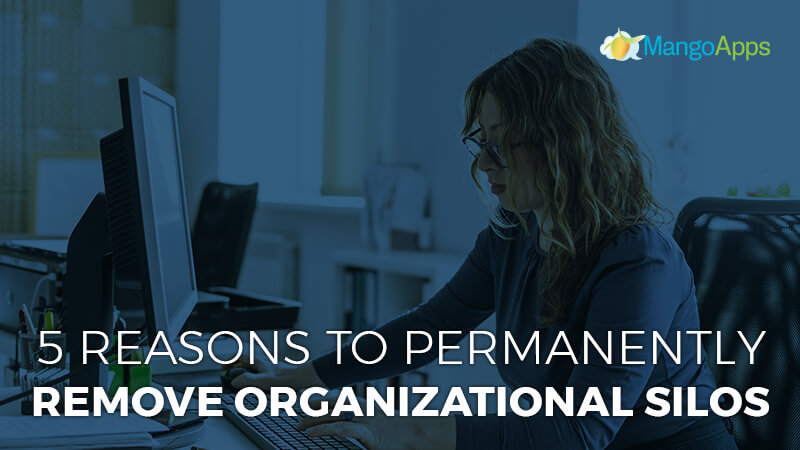
Organizational silos reside within any organization. These silos can exist within large global corporations or a start-up with 10 employees. No matter the size, they are unfavorable to an organization’s ability to succeed in a rapidly changing world.
Organizational silos come in a variety of styles including:
- Geographical Silos – arises from the collaboration difficulties between inter-office locations & remote employees.
- Project Silos – occurs when project information isn’t shared between groups.
- Functional Silos – arises when there is confusion about peoples’ roles within an organization. Often leads to redundancy and feelings of underappreciation among employees.
- Technology Silos – occurs when technology isn’t shared among members of an organization.
- Information Silos – exists due to the barriers of freely sharing of information across an organization.
Silos only create chaos, and the bigger the company, the more harmful a role silos play. Organizational silos create an environment where sharing and collaborating is virtually impossible. The problems of silos reveal themselves in duplicate work, a lack of synergy, and little knowledge transfer or economies of scale. The largest problem, however, is a lack of alignment with the overall company strategy.
Regardless if your organization has data accessibility silos, implementing a Team Collaboration Software with the right amount of business process re-engineering and organizational change management can be one of the best ways to break through these isolating barriers & increase team collaboration within your organization.
Here are 5 reasons to break out of your organization’s silos:
#1: Enable Cross Functional Collaboration
Organizational silos cut off clear communication between different business units. People can fall easily into only communicating with those directly around them. When there is little communication between departments, the right hand doesn’t know what the left hand is doing. A collaboration tool can help track important resources at your fingertips, track employee sentiment, hear crucial feedback, enable a culture of sharing, and speed up team collaboration.
#2: Reduce Duplicate Work
Organizational silos result in overlapping functions, increased costs, duplicated efforts and inconsistent decisions among entities. Effectively using a Collaboration/Intranet platform to promote openness, build inclusivity, and facilitate effective communication can improve organizational efficiency.
#3: Improve Knowledge Retention
The knowledge of each employee at an organization is an invaluable company asset, and the combined knowledge of a company is truly the engine that drives results. However, enormous amounts of useful information is being trapped in information silos, such as email inboxes. Many companies have a limited understanding of organizational expertise or talent because the right information either is not collected, or not available to the right people at the right time to make the right decisions. Integrating a collaboration tool can increase the number of interactions between employees. This can in turn increase their level of trust and encourage more effective collaboration and communication.
#4: Create Effective Teams
In an economy that places increasing demands on a leaner workforce, maximizing resources through high-impact collaboration can have a tremendous impact on productivity. Breaking down organizational silos offers leaders a wide range of tools and strategies to bring out the collective potential of their team and organization as a whole.
#5: Continuous Productivity
Continuous productivity manifests itself as an environment where a collaboration software can make it possible to innovate faster than ever. It shifts our efforts from the start/stop world of episodic work and provides us a chance at a more balanced view of time management.
Removing Organizational Silos With MangoApps
MangoApps provides a Team Collaboration software that brings together employees across various office locations, and provides them with the tools needed to communicate and collaborate efficiently. This is all done in a single, centralized area. For more information on our product suite, contact us or schedule a demo today.







